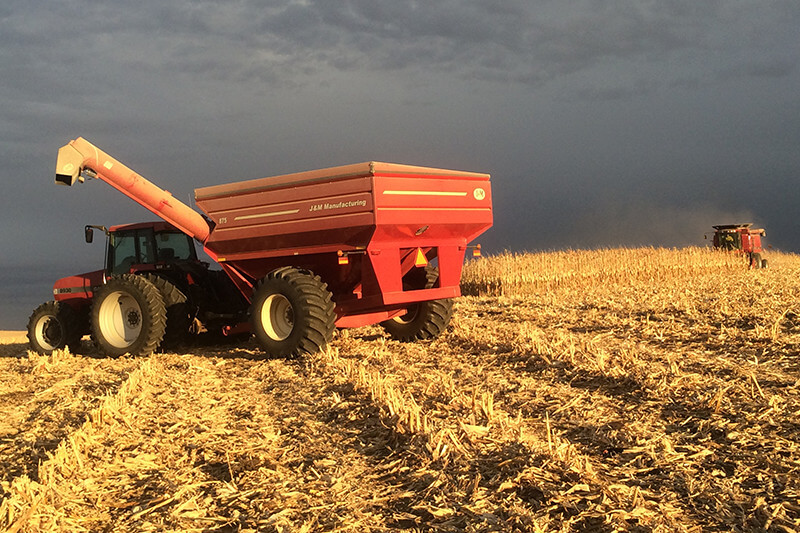Yield data: The starting blocks for next year

Getting crops out of the ground, dried and to the elevator is the number one priority for growers this time of year. However, harvest is also an important time of year to get off to a strong start for next year by gathering valuable yield data from combines.
From what I have noticed, less than 50 percent of growers typically raise their hands when asked if they capture their yield data. Of those that do capture yield data, I would say only 10-15 percent of them actually do something with their data.
Yet, yield data is one of the best tools available to plan for the future. WinField’s Brittany Ullrich advises that, “Our yield goals are only as accurate as our yield map.” If growers do not accurately capture yield on their farm, they could be over- or under- applying fertilizer based on unrealistic or low yields.
The first step in capturing quality yield data is calibration. It is crucial that all combines are calibrated correctly while the first field is being harvested. This ensures that data is accurate, so growers can analyze yield goals for the following year.
“Think on a field-by-field basis, as some fields will yield higher overall,” Ullrich adds. “If you apply the same amount of fertilizer to achieve the same yield goal across your entire farm, you may not capitalize on your total inputs.”
After capturing yield data, it might take several years before growers can start to notice trends and dig deeper into analyzing management zones throughout a field, though the wait is worth it. Once these areas are identified, growers can manage each acre to its fullest potential.
From what I have noticed, less than 50 percent of growers typically raise their hands when asked if they capture their yield data. Of those that do capture yield data, I would say only 10-15 percent of them actually do something with their data.
Yet, yield data is one of the best tools available to plan for the future. WinField’s Brittany Ullrich advises that, “Our yield goals are only as accurate as our yield map.” If growers do not accurately capture yield on their farm, they could be over- or under- applying fertilizer based on unrealistic or low yields.
The first step in capturing quality yield data is calibration. It is crucial that all combines are calibrated correctly while the first field is being harvested. This ensures that data is accurate, so growers can analyze yield goals for the following year.
“Think on a field-by-field basis, as some fields will yield higher overall,” Ullrich adds. “If you apply the same amount of fertilizer to achieve the same yield goal across your entire farm, you may not capitalize on your total inputs.”
After capturing yield data, it might take several years before growers can start to notice trends and dig deeper into analyzing management zones throughout a field, though the wait is worth it. Once these areas are identified, growers can manage each acre to its fullest potential.


